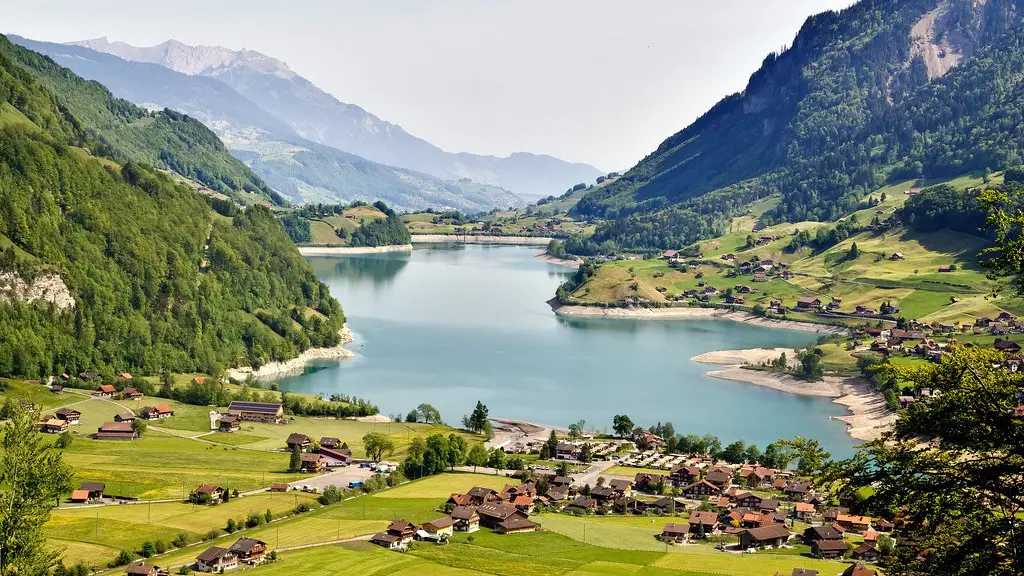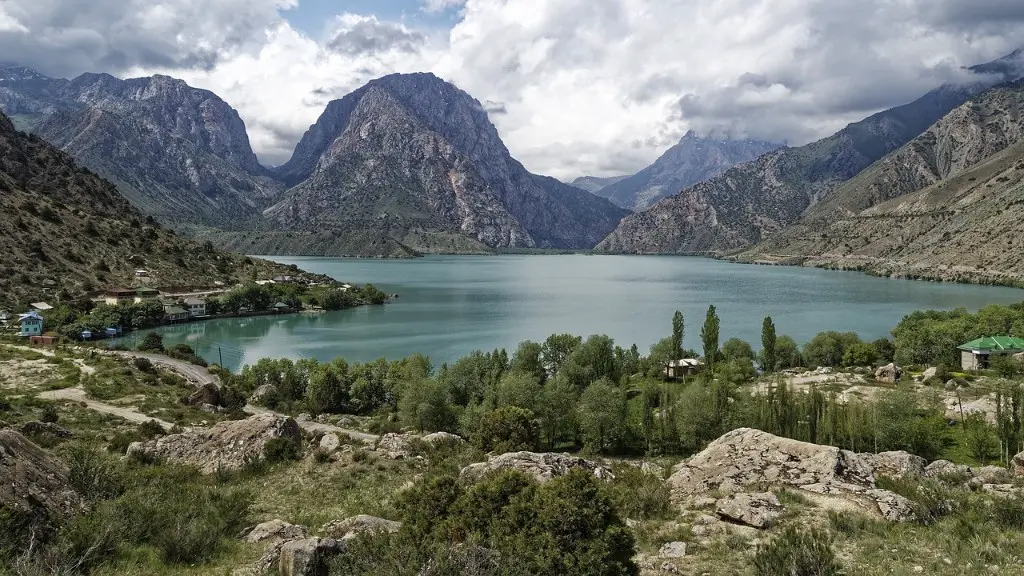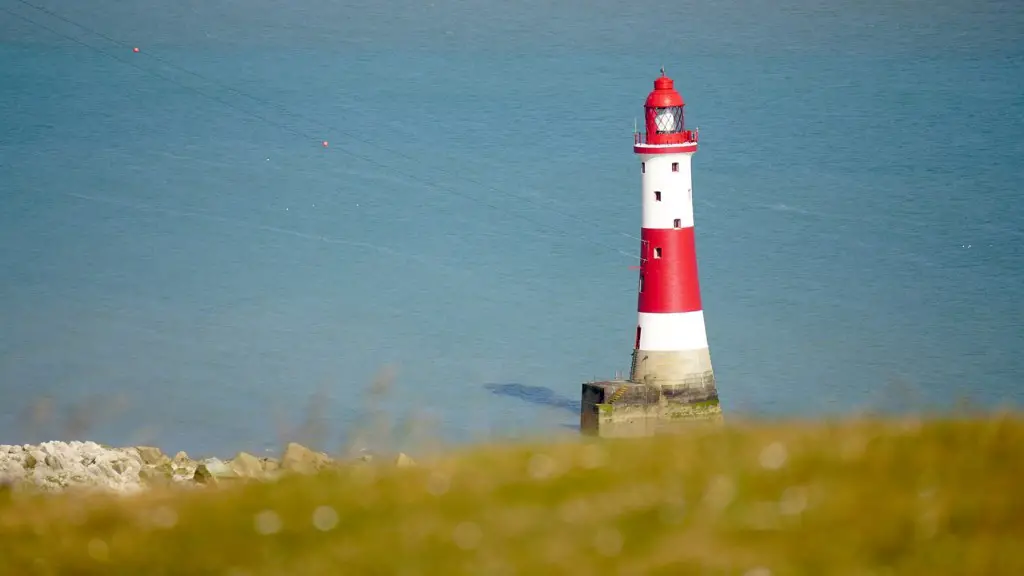Buoy Reading
Lake Huron’s water temperature varies seasonally, as well as throughout the day. Knowing how warm it is at any given time can be crucial to recreational activities such as swimming and fishing. An easy way to check the water temperature is nearby buoys, which can be located on the Great Lakes Observing System’s website.
These buoys use advanced weather monitoring technology to measure the surface temperatures of the water during different times of day. This data is then made available to the public to aid in navigating the lake. They are precise measurements and provide accurate estimations for locals, tour operators and tourists.
Lake water temperature also has an impact on the local wildlife. Aquatic organisms are sensitive to sudden temperature changes due to their thin layer of protective skin. Warmer waters are inviting to some native fish species while they can be treacherous to others. One example is lake sturgeon, which had since disappeared from much of Lake Huron water due to changing temperatures.
The US Environmental Protection Agency (EPA) has been collecting water temperature data from around Huron for several years. The Canadian Environmental Research Agency (CERA) has also conducted studies of its own. Both agencies have reported that Lake Huron water temperature varies from 36 to 70 degrees Fahrenheit (2 to 21 degrees Celsius) during the summer months.
It’s important to take into consideration the time of year and time of day when assessing the water temperature in Huron. During the summer, temperatures tend to be higher in the middle of the day, and lower during the evening. During the cooler months of fall and winter, water temperatures may remain around 40 degrees Fahrenheit (4.4 degrees Celsius).
Additionally, the weather plays an important role in determining the overall water temperature. Hotter temperatures can cause the surface waters to heat up, while cold fronts can drop the readings significantly.
Effects of Climate Change
Climate change is affecting the water temperature across the Great Lakes, especially in Lake Huron. As temperatures increase, the water is likely to get warmer, leading to changes in aquatic communities and potentially threatening coastal areas.
Researchers have been examining how climate change impacts the lake’s temperature. In one study, researchers from the University of Michigan looked at a century of data from nearby stations and found that Lake Huron’s water temperatures have gradually risen over the past hundred years. They attributed this trend to changes in air temperature, as well as the effects of climate change.
As temperatures rise, the lake’s ice-covered regions will experience more of the warm summers that used to be seasonal. These warmer months may bring benefits, such as increased recreational opportunities, but they can also cause damage to native species.
The lake could also be subject to more intense and frequent storms, as well as increased evaporation due to hotter air. These changes could further increase temperatures, making the lake more susceptible to devastating algal blooms and other water-related problems.
Warming water temperatures can also lead to increased bacterial growth, which can create hazards for drinking water supplies. As air temperatures rise, Lake Huron may become the most vulnerable of the Great Lakes, as it is the shallowest.
Impact on Recreation
The varying water temperature has been an important consideration for recreation on Lake Huron. In the summer months, high temperatures make it uncomfortable for people to swim and boat. This can have a negative effect on tourism, particularly from June to August, when temperatures usually reach their peak.
However, in the cooler months the lake is still suitable for many recreational activities such as fishing and boating. As long as the lake is not iced over, it can still be navigated. The lake’s minimum temperature is usually around 40 degrees Fahrenheit (4.4 degrees Celsius) in October and November.
As more people visit the lake during the summer months, warm temperatures can pose a risk to health. Swimmers should always be aware of the water temperature before entering the lake, as hypothermia is a serious risk when swimming in cold water. Boat operators should also be aware of the lake’s temperature, as it can affect the buoyancy of their vessels.
The changing temperature of Lake Huron is an important factor to consider when engaging in recreational activities. Whether it’s fishing in the fall or swimming in the summer, Lake Huron’s temperature will play a role.
Environmental Changes
The changing temperature of Lake Huron has dramatically impacted many of the lake’s native species. Warmer waters can lead to the growth of aquatic weeds, which can be harmful to some native species as they reduce their food sources. Warmer temperatures can also lead to the spread of toxic algae and potentially decrease oxygen levels in the water.
The effects of climate change are felt both by humans and wildlife alike. Changes in water temperature can lead to alterations in fish’s feeding and spawning habits, as some species may be more vulnerable than others. This could lead to reduced populations, and ultimately endangering some endangered species.
The changing temperatures can also affect fish habitats. Warmer water can lead to changes in the lake’s water chemistry, as well as the number of species that inhabit the lake. Warmer temperatures can also lead to the disappearance of some species due to their limited ability to adapt, resulting in a diminished diversity of life.
Climate change is already having a dramatic effect on Lake Huron’s water temperature. The lake’s temperature is likely to continue to rise, leading to more drastic changes in the lake’s ecosystem.
Effects on Coastal Areas
Lake Huron’s changing temperature could also have an impact on coastal areas. Warmer water could bring an increase in sea level, leading to flooding in some areas. This could lead to significant property damage, as well as extinction of some species.
Warmer water could also increase the risk of shoreline erosion. With less ice cover in the winter and warmer temperatures in the summer, the shoreline would be exposed to more storms and waves, leading to both erosion and flooding.
The EPA and CERAE have put in place a number of regulations and policies to help protect the lake’s waters. These include a number of fisheries management plans, as well as restrictions on water use and runoff from agriculture.
In addition to government regulations, local advocates and citizens have put in place an array of initiatives to help protect Lake Huron. These programs include planting native plants, creating wetlands and restoring habitats, as well as reducing waste and pollution.
Lake Huron’s water temperature is an important consideration for the health of its ecosystem. As the climate continues to change, it is important to monitor the lake’s temperature and take action to protect its delicate balance.
Conservation Efforts
To protect Lake Huron’s water temperature, there are a number of conservation initiatives that can be implemented. The most effective way is to reduce the amount of carbon dioxide emissions, as these are the main cause of climate change.
Another way to mitigate the effects of climate change is through natural methods such as planting native vegetation, creating wetland habitats, and reducing pollution and runoff from agriculture. These activities can help to absorb the carbon dioxide that contributes to climate change and maintain the lake’s delicate balance.
In addition to conservation efforts, technological solutions have been developed to help protect the lake’s temperature. For example, some tour operators have begun to use ‘thermistor rings’, a device which monitors the lake’s temperature in real-time, to help protect their customers from any sudden changes.
A number of local groups and organisations are also advocating for the protection of Lake Huron. These initiatives involve raising awareness of the lake’s changing temperatures, lobbying governments to enforce regulations, and conducting research to better understand the effects of climate change.
Lake Huron’s water temperature is an important factor to consider when assessing the health of the lake. With careful monitoring, conservation efforts, and technological advances, we can work together to protect the lake and its delicate ecosystem.





